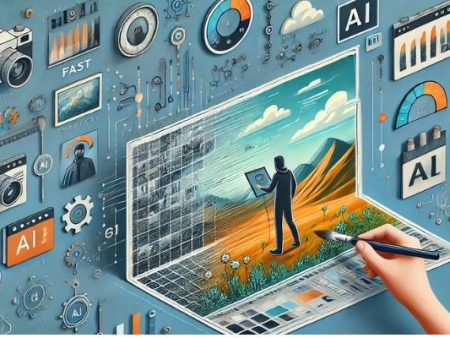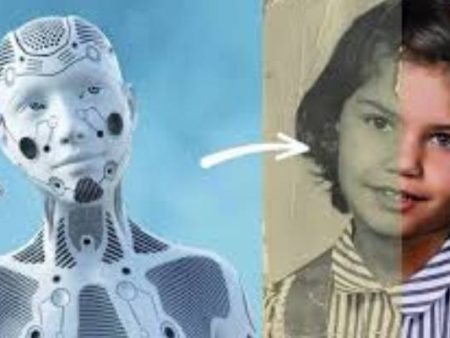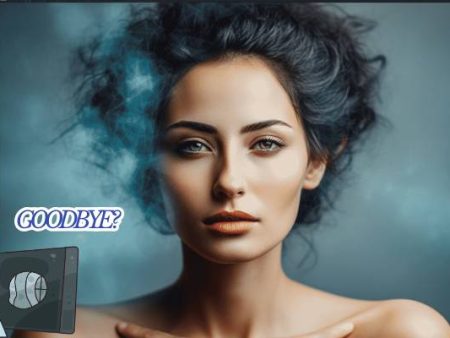Do you remember the first time you played around with Photoshop? Maybe you adjusted the lighting on a photo, smoothed out imperfections, or layered images just to see what would happen.
Back then, it felt revolutionary—almost magical. But today? Photoshop feels like a stepping stone compared to what’s happening with AI image generation.
It’s not just about “fixing” or “editing” anymore; it’s about inventing entire visual worlds from scratch.
We’re not only witnessing how evolution from Photoshop to works in real time—we’re standing on the edge of a creative shift that could redefine what it means to make art, tell stories, or even remember our past.
And here’s the kicker: people are torn. Some call it a tool for empowerment. Others, a threat that rivals human creativity. Both sides are right in some ways.
But let’s unpack this journey—because ignoring it would be like refusing to acknowledge how photography once unsettled painters, only to later become its own art form.
From Photoshop to AI: The Creative Timeline
It’s fascinating to think about how digital creativity has unfolded in just a few decades:
- Early Days (1990s – early 2000s): Photoshop and digital art tools gave everyday users access to professional-level editing. Suddenly, visual storytelling wasn’t reserved for experts.
- The Social Media Era (2010s): Platforms like Instagram turned editing apps into cultural phenomena. Filters, presets, and quick retouching democratized the aesthetics of photography.
- The AI Leap (2020s): Generators like DALL·E, MidJourney, and Stable Diffusion shattered the idea that visuals had to begin with a camera or brush. You could type “a neon-lit street in Tokyo with flying cars” and—voilà—a canvas appeared.
This isn’t just a technical upgrade. It’s a paradigm shift. Photoshop let us manipulate reality. AI lets us create realities that never existed.
That’s the real impact of photos: which will dominate—the ones we capture or the ones we imagine?
Why AI Feels Different
Here’s the thing: humans have always used tools to enhance creativity. The paintbrush, the camera, the graphic tablet—they were extensions of human intent.
AI feels different because it doesn’t just extend—it participates. It’s collaborative, yet autonomous.
When you prompt an AI with “a portrait of a medieval knight sipping coffee in Brooklyn,” it doesn’t just copy or paste assets.
It interprets, generates, and sometimes surprises you with results you didn’t anticipate. That’s unsettling and exhilarating at the same time.
I’ll be honest: the first time I used an AI image generator, I laughed out loud. It felt too easy, like skipping the hard work that makes art meaningful.
But then I realized—ease doesn’t necessarily mean shallowness. The struggle isn’t gone; it’s shifted. The artistry is now in the idea, the prompt, the curation.
Statistics That Put This Shift in Perspective
If this feels like hype, let’s anchor it in some numbers:
- According to MarketsandMarkets, the AI image generation market is expected to grow from $16.1 billion in 2023 to $63 billion by 2028. That’s not a fad; that’s acceleration.
- A Pew Research study found that 62% of Americans believe AI will have a major impact on jobs in creative industries within 20 years.
- On platforms like MidJourney, users are generating millions of images daily—outpacing the number of professional photographs taken by agencies in the same timeframe.
If you’re skeptical about this being about becoming the new photography, think again. The numbers suggest otherwise.
The Emotional Impact on Artists
Let’s pause here. Beyond the tech and stats, what does this feel like for people who’ve dedicated their lives to visual craft?
I’ve spoken to illustrators who feel both awe and dread. On one hand, AI opens doors: it can help brainstorm concepts faster, create mood boards in seconds, or generate references that used to take hours of searching. On the other hand, it threatens the identity of the craft itself.
Imagine spending years perfecting brushwork, only to see someone type a prompt and generate something strikingly close to your style.
It can feel like watching a machine steal not only your labor but your soul. That’s heavy, and dismissing those feelings would be deeply unfair.
Empathy matters here. Artists aren’t just resisting change out of stubbornness. They’re protecting meaning, legacy, and their sense of place in a world where creativity is being redefined.
Everyday Uses You Didn’t See Coming
AI image generators aren’t just shaking up professional art—they’re sneaking into everyday life in ways that are oddly intimate.
- Personalized Memories: People are reimagining old family photos—turning grainy black-and-white snapshots into full-color, hyper-detailed portraits. The impact of photos: which will dominate becomes clear when a grandmother’s faded smile suddenly feels alive again.
- Education: Teachers use AI to generate historical scenes, making lessons more engaging and tangible for students.
- Marketing: Small businesses that couldn’t afford professional design teams are producing high-quality visuals for ads and social media.
- Therapy: Some therapists are experimenting with AI images to help clients visualize emotions, traumas, or aspirations.
Who would’ve thought that an algorithm could help someone “see” their anxiety as a dragon they can confront? That’s more than tech—it’s emotional storytelling.
The Debate: Rival or Partner?
This is the crux of it: is AI a rival or a partner?
- As a rival: It automates tasks, threatens jobs, and muddies authorship. If anyone can generate art, what’s the value of being an artist?
- As a partner: It amplifies imagination, accelerates workflows, and invites new voices into creativity. Suddenly, kids, retirees, or people with disabilities can participate in visual art without traditional training.
My personal take? It’s both. And pretending it’s just one or the other oversimplifies reality. The impact of that rivals human creativity is undeniable—but so is the potential for collaboration.
The artists who lean into AI as a co-creator may find new dimensions of expression they never imagined.
The Question of Authenticity
One of the deepest questions AI art raises is: what makes something authentic?
When photography was invented, painters argued it wasn’t real art—it was mechanical reproduction.
Yet photography grew into its own discipline, rich with artistry. I believe AI is on a similar trajectory.
- If art is about skill: AI threatens it.
- If art is about expression: AI enhances it.
- If art is about connection: AI challenges us to rethink what connects us—process or outcome?
Risks and Ethical Considerations
Of course, this shift isn’t all rosy. There are risks we can’t ignore:
- Copyright & Style Theft
- Artists are already suing AI companies for training models on their work without consent.
- Misinformation
- AI-generated “photos” can spread fake news, blurring the line between reality and fiction.
- Cultural Biases
- Models often replicate stereotypes or erase marginalized aesthetics.
- Job Displacement
- Entry-level design jobs may be the first to go, reshaping the labor market in unpredictable ways.
These aren’t minor issues. They require real conversations, regulation, and a balance between innovation and fairness.
Where Do We Go From Here?
So, what’s next? Will AI be regulated like photography once was? Will new industries spring up around prompt engineering, AI curation, or ethical auditing?
Some possible futures:
- Hybrid Creativity: Artists blending AI and traditional techniques become the new norm.
- AI as a Tool, Not a Threat: Just as calculators didn’t kill math, AI may not kill art—it may expand it.
- Revaluing Human Touch: Ironically, the more AI generates, the more we may crave art that feels unmistakably human.
The truth is, none of us know exactly how this will unfold. But pretending it isn’t happening isn’t an option.
Conclusion: A Human Story After All
AI image generation isn’t just about technology—it’s about us. Our fears, our hopes, our longing to create and be remembered.
Whether we embrace it as about becoming the new photography, or resist it as a rival to our souls, one thing’s clear: it’s not going away.
The challenge now is less about whether AI will change creativity, and more about how we’ll choose to live with that change.
Will we use it to deepen expression, democratize access, and expand imagination? Or will we allow it to flatten creativity into a race of efficiency and imitation?
I believe the answer lies in something machines can’t replicate: empathy, nuance, and the messy beauty of being human.


